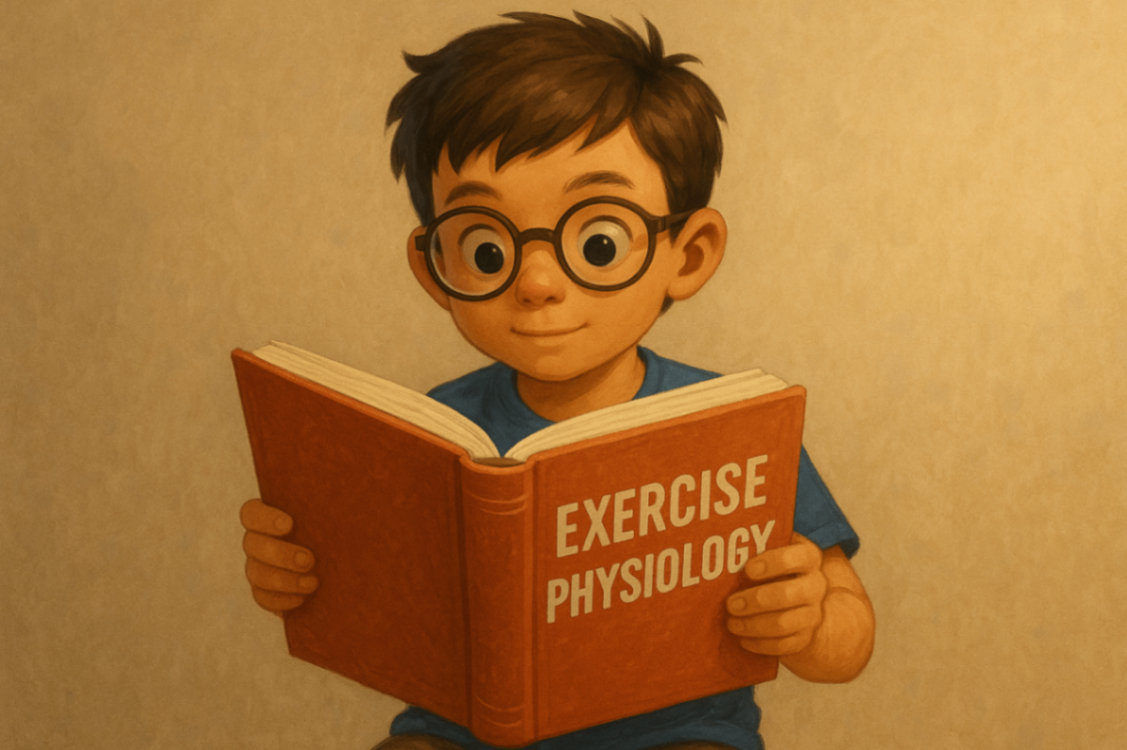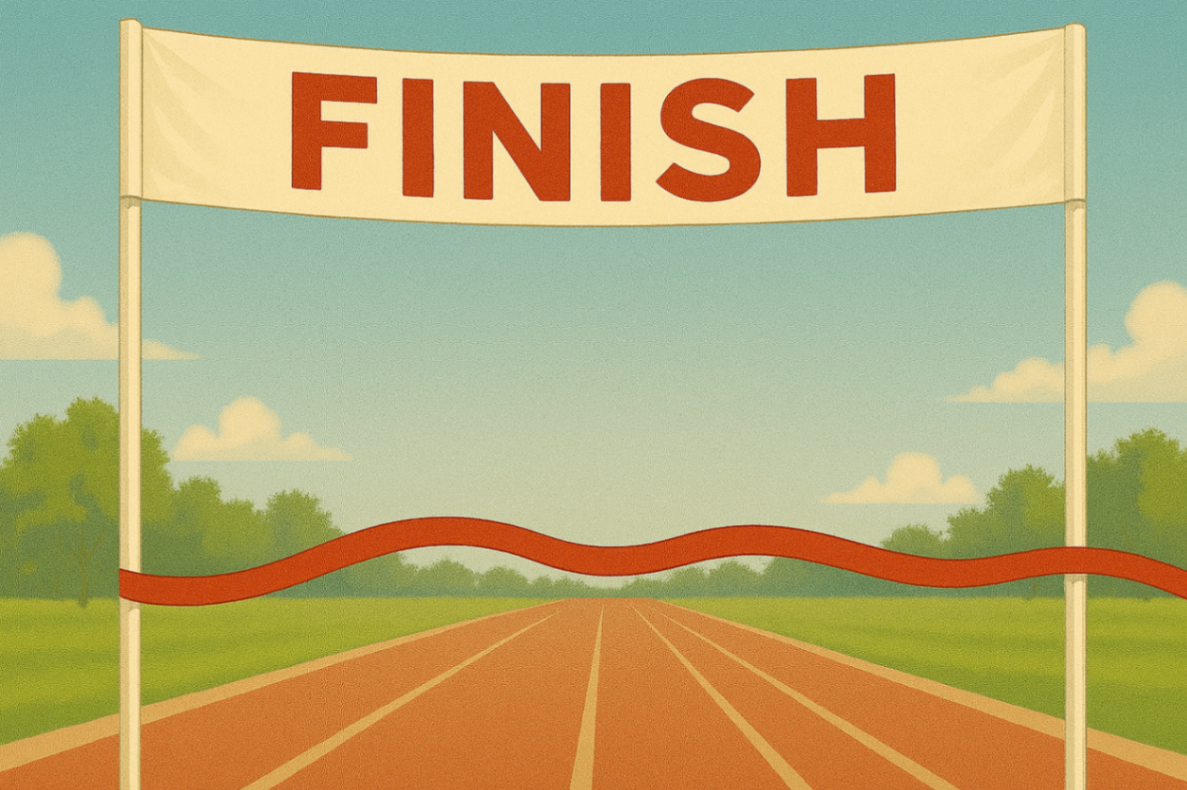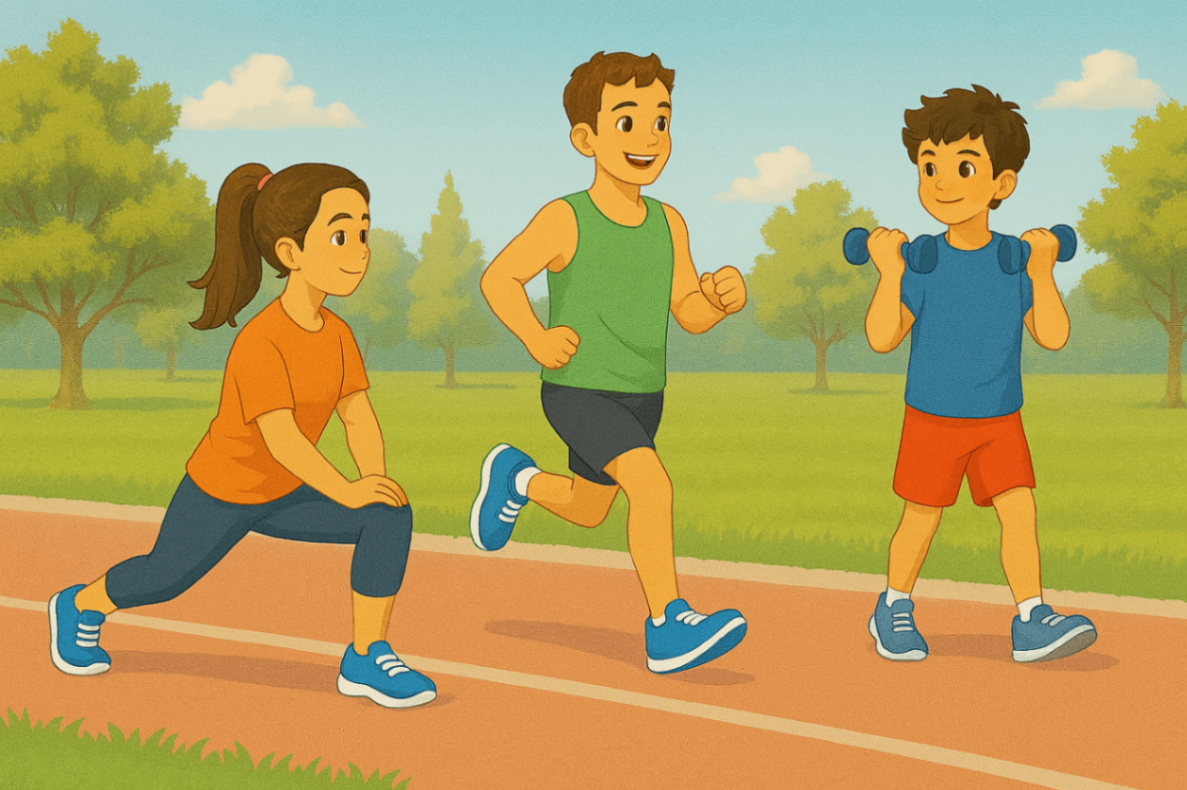
exploring 5 main goals of exercise physiology
21 July, 2025
Introduction
Exercise physiology is a key part of exercise science. It looks at how physical activity can help with health promotion. This field connects physical education and health care. The people who work in exercise physiology can use what they know about bodies to come up with the best ways to help others be well and get better if they are sick.
Exercise physiology plays a big part in making people fitter. It also helps those with chronic conditions feel better. Because they know about the way bodies work, experts in this field can teach and support people to be more healthy through the right exercise. What they do is good for overall health and wellness.
Key Highlights
-
Exercise physiology is a branch of exercise science focused on enhancing physical activity, health promotion, and managing chronic conditions.
-
Its primary goals include improving physical fitness and aiding injury rehabilitation and recovery through exercise regimens.
-
Certified exercise physiologists develop strategies to enhance athletic performance and promote mental health and overall wellness.
-
Exercise-based interventions are employed to prevent and manage diseases like diabetes and cardiovascular conditions.
-
Collaboration with other health professionals is pivotal in creating tailored physical activity programs for optimal patient and athlete outcomes.
What is Exercise Physiology?

Exercise physiology is not just about how people move. It brings together physical activity, physical education, and physiology. People who work in this field learn how the body reacts to being active. They create plans based on facts to help others be healthier and fitter. Many also help people with special medical needs.
Programs in exercise science and related fields help you become an exercise physiologist. These degree programs include subjects like anatomy, nutrition, and kinesiology. This mix gives you a strong base to do well in this field. Next, let’s look more at what exercise physiology means and what people in it do. If you're curious about how these goals come to life in real settings, check out our guide on what to expect at your first exercise physiology appointment. It walks you through the step-by-step process and how your goals shape the personalised plan you’ll receive.
Definition and Scope of Exercise Physiology
At its center, exercise physiology looks at how the body responds when you do physical activity. It also studies how your body adjusts when you keep doing an exercise routine. This area of physiology is connected to both exercise science and kinesiology. It focuses on how our heart works, how well we breathe, and how our muscles move.
The scope of practice covers making and putting exercise plans into action. These plans fit both medical conditions and athletic goals. Some exercise plans are made to help healthy people get more fit. Others are written out to help treat long-term illnesses. Certified exercise physiologists work to bring together health promotion and prevention. The goal is to help people stay well for a long time.
Exercise physiology ties in with other areas like physical therapy and athletic training. This helps it make a real difference in healthcare and sports. It uses facts from biomechanics, nutrition, and rehabilitation. Because of this, professionals can help with all sorts of needs. They can work with someone coming back from an injury or someone trying to play better in sports.
The Role of Exercise Physiologists in Australia

In Australia, certified exercise physiologists work under ESSA (Exercise & Sports Science Australia) to make sure practice in the field meets standards. These professionals are a big part of health promotion because they help people recover from injuries and medical conditions. They do this by guiding patients through safe and effective physical activity and exercises.
These qualified exercise professionals also work with healthcare teams to meet each person's physical activity needs. They use their skills to check on the heart and blood flow, make helpful programs, and help people gain more flexibility, get stronger, and build overall health.
The healthcare system in Australia depends more and more on exercise physiologists for managing ongoing medical conditions and helping people get better. You can find these professionals in hospitals and fitness centres, working with doctors, physiotherapists, and other health experts. Their work helps make treatments better and gives people better results. Now, let’s talk about the first big goal of this important field.
Goal 1 – Enhancing Physical Fitness
Improving physical fitness is a big part of exercise physiology. Experts use physical activity programs to help people be more flexible, have more endurance, and keep their cardiovascular health strong. In fitness centres and gyms, you will often find certified professionals. They make personalised plans for people, with a focus on their own needs and overall health goals.
Doing regular exercise is an important topic in physiology. It helps with weight management, lowers stress, and builds strength. These physical activity programs give people ways to start a better lifestyle and fight against habits where people sit too much. Soon, we will talk about steps you can take to get the most out of your fitness levels.
Strategies for Improving Fitness Levels
Improving your fitness takes steady work and a good plan. Exercise physiologists use a few key ways to help people get the most from physical activity:
-
Continuous Training: Keep doing longer exercise sessions. This will help your heart health and raise your endurance over time.
-
Interval Workouts: Mix short periods of hard exercise with times of rest. This can make your muscles and heart stronger.
-
Strength Training: Use weights or your own body weight when you exercise. That helps grow muscles and keeps your body working well.
-
Custom Exercise Regimens: Make special exercise plans that fit your own fitness level, your age, and your health needs. This helps you keep improving.
Every one of these tips is based on simple ideas of physiology. They work for all types of people and are good for your body. These steps help you see real changes in the way you move and feel. When you use them, you go up to the next level in physical activity and feel better in your daily life.
Goal 2 – Preventing and Managing Chronic Diseases
 Exercise physiology plays a key role in fighting long-term medical conditions. These include things like diabetes and heart disease. The focus is to use planned physical activity to stop, manage, and ease the signs of these illnesses. Physiologists help by making special exercise regimens for each person. These usually have both moderate and strong activities. The goal is to help the heart and muscles stay healthy.
Exercise physiology plays a key role in fighting long-term medical conditions. These include things like diabetes and heart disease. The focus is to use planned physical activity to stop, manage, and ease the signs of these illnesses. Physiologists help by making special exercise regimens for each person. These usually have both moderate and strong activities. The goal is to help the heart and muscles stay healthy.
These steps are also important for health promotion. They give support so that patients can use physical activity as part of their treatment. As more people face chronic conditions around the world, physiology and smart exercise regimens give hope for better care. Up next, we look at the use of physical activity in fighting major diseases.
Exercise Physiology in Diabetes and Cardiovascular Disease
Exercise physiologists play a big role in helping people manage diabetes and heart problems. They do this by making special exercise plans for each person. These plans help control glucose levels and support better cardiovascular health. Below is a table to show the main benefits:
|
Disease |
Physiology-Based Interventions |
Outcomes |
|---|---|---|
|
Diabetes |
Aerobic exercises, strength training |
Improved glucose levels, weight control |
|
Cardiovascular Disease |
Interval training, walking programs |
Enhanced cardiac function, reduced blood pressure |
Clinical exercise physiologists also add advice about nutrition. They work with doctors to keep things safe for the patient. People get better endurance and stronger body systems. This makes physical activity fit well into the way we handle long-term health issues.
Goal 3 – Optimising Athletic Performance

Improving how athletes perform needs a well-rounded plan. Exercise physiologists focus on this important area. They look at things like the athlete’s endurance, speed, and how well their muscles work. With this information, the experts can make routines that lower exercise fatigue and help the athlete do better.
Certified athletic trainers and physiologists work together on these plans. They look at the problems that come up in different sports. Their goal is to help both new athletes and professionals. They use special methods to help the body move better and to help with a faster recovery time. The next part will talk about the main ways they measure performance for this kind of work.
Assessment and Program Design for Athletes
Assessing athletes starts with looking at their endurance, how flexible they are, and how they move. To do this the right way, an exercise physiologist can use what they learn from getting certified by programs like ACSM. This helps them make programs that work well for people.
Working together with fitness trainers, exercise physiologists come up with plans that fit each person. The aim is to boost strength and stamina for every athlete. They might change how you work out or try new ways, so each plan is not like any other.
These plans focus on how fast people recover and how it helps stop injuries. This is very important if you want to stay at the top of your game. New ideas in exercise science lead the way for all these efforts in making athletes better with every session.
Goal 4 – Promoting Mental Health and Wellbeing
Exercise physiologists care about both your body and your mind. When you do physical activity often, it can help you feel less stress and lift your mood. It can also help you think better and feel more clear-headed.
Wellness programs mix ways that help both your body and mind. These programs are made for what you need. They use exercise science to show how being active is good for mental health. This gives experts ways to help people feel much better. Now, let’s look at what the psychological benefits are.
Psychological Benefits of Exercise
Exercise physiology brings the use of the physical activity to help the mind in many ways:
-
Stress Reduction: When you move the body often, it lowers the stress hormones in the body. This helps you to feel calm.
-
Mood Enhancement: Physical activity makes the body release endorphins. These help you feel happy and ease anxiety.
-
Sharp Cognitive Function: Doing regular activity gets the brain working. This helps with the memory and can make you focus better.
-
Sleep Quality: Moving your body helps you sleep better. Better sleep is good for the mind in many ways.
So, when exercise physiologists add physical activity programs into the treatment plans, they help to lift mental wellbeing in a big way.
Goal 5 – Supporting Injury Rehabilitation and Recovery
Injury rehabilitation is a key part of exercise physiology. The main focus is to help people get motion, strength, and flexibility back after they get hurt. To do this, the plan often has stretching, some work to build endurance, and activities that make the heart stronger. Over time, these can help people get better in the best way.
Physiologists often use the ideas from physical therapy and match them with the right exercise plans. This mix can help people stay healthy for many years. Next, we will talk about how picking the right exercises helps with injury care. These goals aren’t just for adults. If you need examples of meaningful, family-centred outcome measures to use in plans, read Measuring Progress — Key Outcomes in Exercise Physiology.
Exercise Prescription for Rehabilitation
Exercise prescriptions are very important for injury recovery. The physiologist looks at the condition of the patient. They make a plan that mixes physical therapy with special movements to help damaged or weak parts of the body get better.
These treatments can include dynamic stretching to help with flexibility. They can also give weight-support exercises if someone has broken a bone. Degree programs teach exercise physiologists how to work well in these hard rehab cases.
When professionals have CPR certificates and in-person experience, they know how to handle many kinds of injuries. They help people heal in a safe way by using the right movements for recovery.
Collaboration with Other Health Professionals
Exercise physiologists talk with nutritionists, physiotherapists, and other health experts to build care plans that cover everything someone may need. Physiotherapy checks match up with exercise plans. This makes it easier for a person to heal from injuries. Working as a team in exercise science helps improve how happy patients are with their care, and how they recover overall. It shows real growth when it comes to bringing different types of medical care together.
Want a refresher on the foundations of this field? Understanding exercise physiology covers the core principles that support these five main goals in both clinical and everyday contexts.
Conclusion
In the end, exercise physiology is very important for many reasons. It helps people get in better shape, stay on top of long-term health problems, do their best in sports, feel good in their mind, and heal after an injury. When you know about these five main goals, you can really see how an exercise physiologist helps with keeping your overall health and happiness in check.
No matter if you are an athlete who wants to do your best or just someone who needs help with health issues, having an exercise physiologist to guide you can be a big help. Talk to us to find out how exercise and physiology can help you.
Frequently Asked Questions
What is the difference between Exercise physiology and Physiotherapy?
Exercise physiology looks at how physical activity changes the systems in your body and helps with health promotion. Physiotherapy, on the other hand, deals with physical therapy methods to treat injuries or problems with moving around. These two fields are connected, but the scope of practice and the way they work are not the same in physiology and physical therapy.
What are the benefits of exercise physiology?
Exercise physiology helps people get better overall health and manage chronic conditions. It uses physical activity as a tool for treatment. With certain exercise plans, people can see better health in the long run. This focus is on heart health, flexibility, wellness, the body, and stopping diseases before they start.
Is exercise physiology covered by Medicare in Australia?
Yes, Medicare in Australia pays for services by trained exercise physiologists who follow ESSA rules. If doctors send patients, they can get help based on real proof through special degree programs.
.svg)












